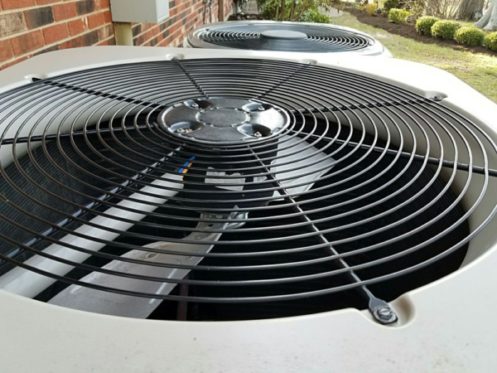Now that the summer is behind us, it’s time to start thinking about how you can prepare your household for the chilly Missouri winter. While most homeowners realize that they need to get their heating systems ready for the cold weather, far fewer consider how to prepare their air conditioners for winter.
Although you probably won’t need to crank up the AC for the next few months, that doesn’t mean you should just forget about your cooling system. To make sure your air conditioner is still in great condition when you need it next year, you’ll want to take certain maintenance measures to protect and maintain it. That way, when the Missouri spring and summer come back around, you won’t have to worry about keeping your home cool and comfortable.
Why Is Winterizing Your AC Unit Important?
Since you most likely won’t be depending on your air conditioner during winter, you may be wondering why it’s important to prepare it for the season. There are a couple of reasons why you should winterize your AC unit. For one, letting any appliance sit for months without use or care can cause it to rust or become extremely dirty. As a result, the system may not be in good working condition by the time you’re ready to use it again.
The most important factor, though, is that the Missouri winter can come with very harsh conditions, including freezing temperatures, snow, and ice. Since your central air conditioning system features a major outdoor unit, it can be exposed to those elements, which can cause significant damage to the appliance.
Ultimately, if you neglect to prepare your air conditioner for winter, it could end up being in significantly worse shape by the time the warm weather returns. So, what steps should you take to winterize your AC unit?
1. Shut Off the Power
Ideally, the first step you should take to prepare your cooling system for the Missouri winter is to shut off its power. If you don’t, the system may start running on any unusually warm days. This can lead to water condensing in the appliance, which could then freeze when the temperature drops again and cause damage to the condenser unit.
With some AC units, shutting off the power is as simple as flipping the electric disconnect switch located near the unit. Otherwise, you can turn the system off by locating your home’s exterior power circuit, removing the cover, and finding the labeled switch for your air conditioner. Simply flip that switch to “off,” and you’ll be good to go.
2. Clean the Outdoor Unit
Before you continue the process of winterizing your air conditioner, it’s always wise to ensure that it’s as clean as possible. If you haven’t cleaned the outdoor unit in a while, there’s a good chance it has become pretty dirty. Over time, things like dirt, leaves, twigs, and random debris tend to accumulate on and around the unit. In many cases, the areas between the metal fins of the condenser coil can become dirty and clogged as well, which can be quite detrimental to the performance of the appliance.
Take some time to wipe away any dirt or other gunk that has built up on the unit. You can use a broom to sweep away any leaves and debris, and you can also use a hose to gently rinse between the metal fins on the unit’s exterior. Once you’ve finished cleaning off the outdoor condenser, it’s imperative that you allow it to thoroughly dry before moving on to the next winterization steps.
3. Thoroughly Inspect the System
It’s always prudent to inspect your air conditioner for any issues before winter. For one, this helps ensure that it will be in good working order when you start needing your AC again in a few months. Plus, an inspection will help ensure that the unit doesn’t have any problems that will make it more vulnerable to the harsh conditions of the Missouri winter. You can either inspect the system yourself or hire local HVAC professionals to handle it for you. In the greater St. Peters area, you can always schedule an appointment with our team at Jerry Kelly Heating & Air Conditioning to give your air conditioner a comprehensive inspection and repair any equipment issues.
If you decide to inspect your AC unit yourself, you’ll want to look for things like cracks, leaks, and loose components. It’s especially important to make sure that the casing on the system’s outdoor unit is in good shape. Otherwise, the odds of it being damaged by the elements will be significantly higher. If you come across any damage, you should have your trusted local HVAC experts fix the issues before you finish the winterization process.
4. Add Insulation
Your central air conditioner likely has pipes and wiring that are exposed to the elements, and they’ll be at significant risk during winter if they aren’t properly protected. To ensure that they don’t get damaged, you should put foam pipe covers around the pipes and wires and use duct tape to keep them securely in place. This will keep the wiring as well as any liquid inside the pipes from freezing when the temperature drops outside. That way, you won’t need to worry about the pipes becoming cracked, and you’ll avoid needing to have them repaired when spring comes back around.
5. Cover the Unit
Perhaps the most important part of preparing your air conditioner for winter is covering the outdoor unit. With a high-quality cover, the unit will be protected from the elements and random debris. Generally, you’ll want to go with a waterproof cover made of plastic or vinyl. Since your air conditioner is such an important appliance, it’s probably worth splurging a bit to make sure you’re getting a reliable cover that will effectively do its job. Typically, you should be able to find a good selection of covers made specifically for AC units at your local home improvement or hardware store.
When you put the cover over the outdoor unit, make sure that it’s secured and won’t be at risk of blowing away in the case of strong winds. You should be able to achieve this using ropes or bungee cords.
6. Check the Unit Regularly
Once you’ve winterized your air conditioner, it’s easy to just forget about it for the entirety of winter. However, that would be a mistake. Ideally, you should make a point to check the system’s outdoor unit every week or two. That way, you can brush away any snow, leaves, or debris that has accumulated on top of the unit and verify that the cover is still properly in place. It should only take a few minutes each time, but it is crucial for making sure that the winterization steps you took hold up throughout the cold season.
At Jerry Kelly Heating & Air Conditioning, we’ve been faithfully serving the St. Peters area for over 45 years. In addition to our high-quality air conditioning services, you can also count on us for your heating, indoor air quality, and water heater needs. Our technicians are friendly, knowledgeable, and skilled, and they’ll go the extra mile to assist you with all of your home comfort needs. Give Jerry Kelly Heating & Air Conditioning a call today to schedule an appointment!

